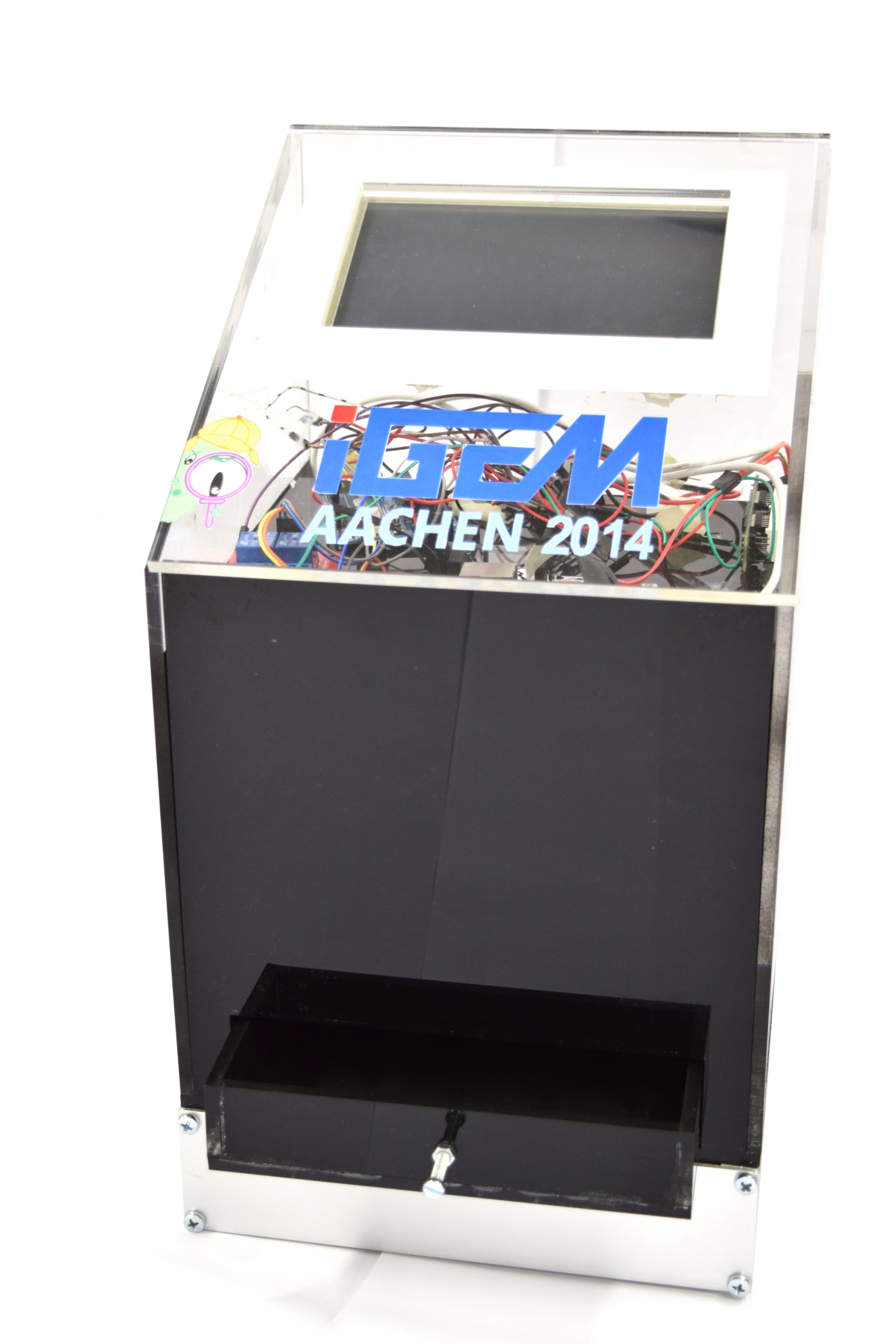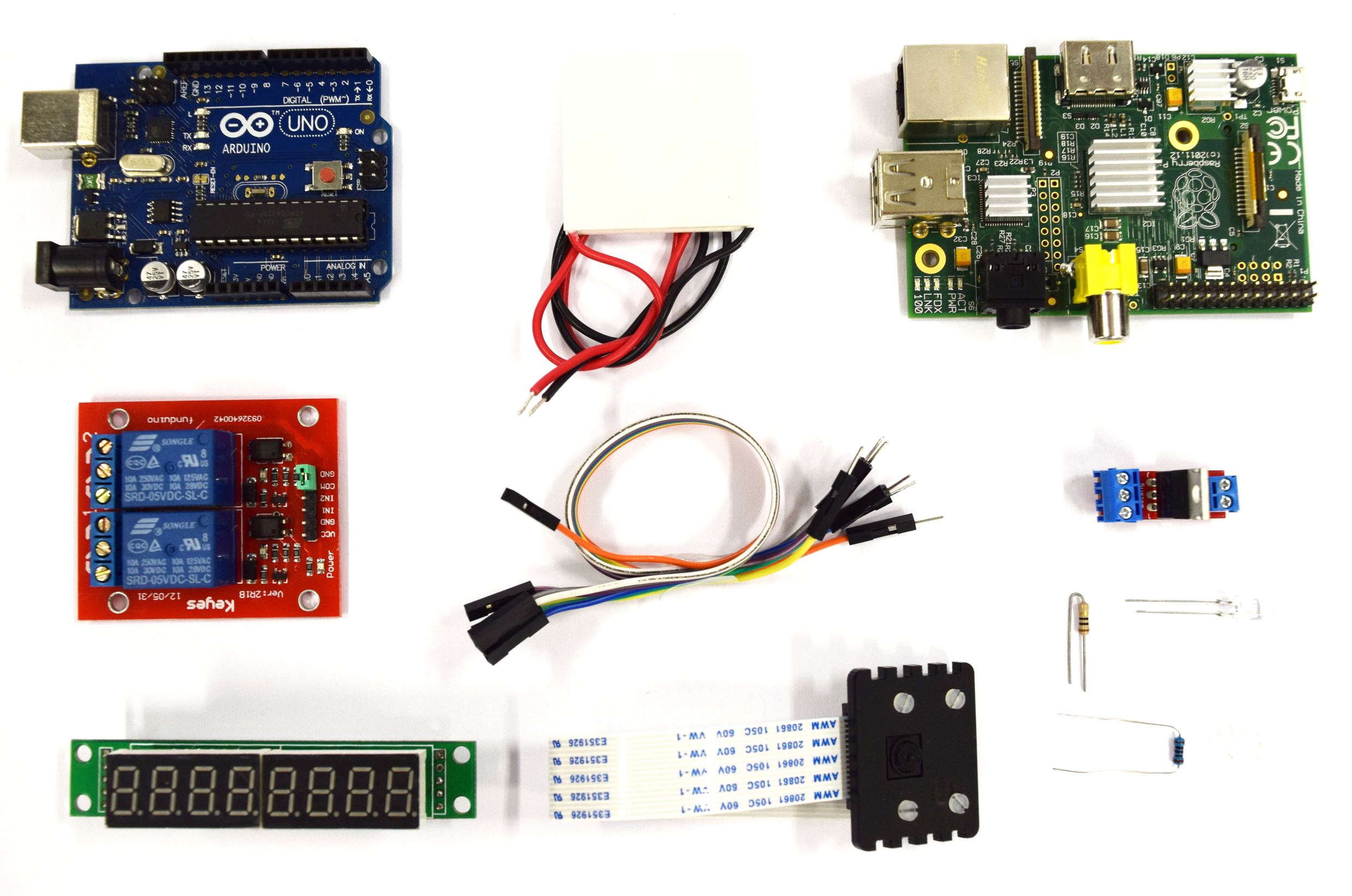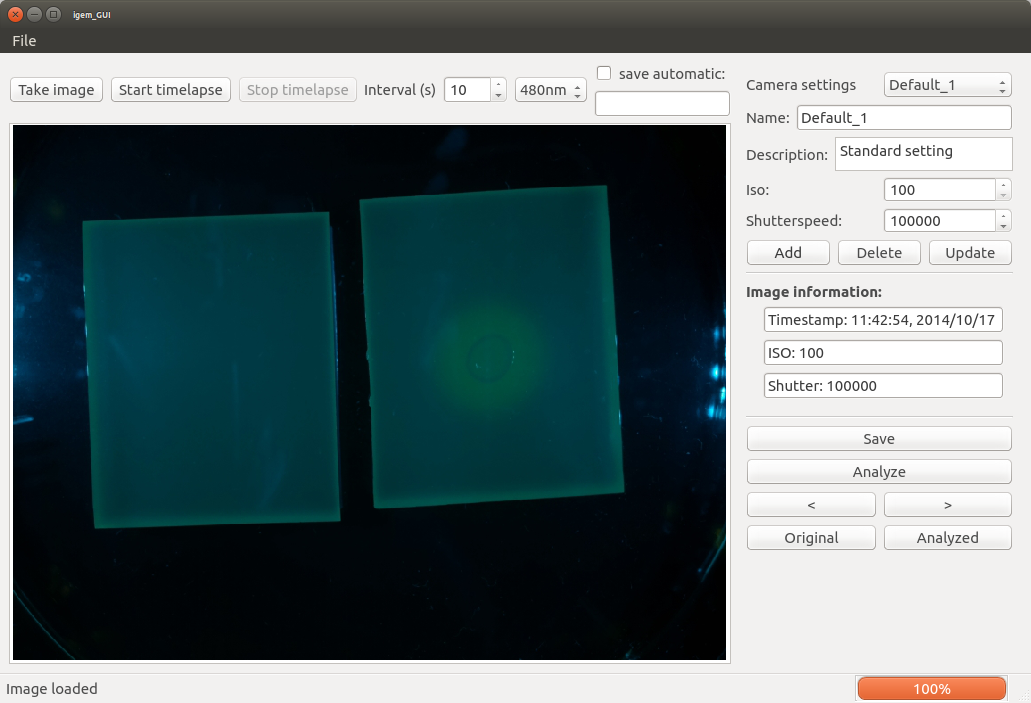Team:Aachen/Project/Measurement Device
From 2014.igem.org
| Line 77: | Line 77: | ||
{{Team:Aachen/Figure|Aachen_Device_Elektronikkomponenten1.jpg|title=Hardware components||width=520px}} | {{Team:Aachen/Figure|Aachen_Device_Elektronikkomponenten1.jpg|title=Hardware components||width=520px}} | ||
Our hardware consists of the casing and the electronical components. The casing which can be seen in the first section was build from laser cutted acrylic glass. <html><br/></html> | Our hardware consists of the casing and the electronical components. The casing which can be seen in the first section was build from laser cutted acrylic glass. <html><br/></html> | ||
| - | The electronic circuit is a combination of the components displayed in the image. We combined the Raspberry Pi, a small single-board computer, running a Linux operating system and an Arduino board to control the LEDs and a Peltier heater. For taking an image we connected the Raspberry Pi camera to the board.<html><br/></html> | + | The electronic circuit is a combination of the components displayed in the image above. We combined the Raspberry Pi, a small single-board computer, running a Linux operating system and an Arduino board to control the LEDs and a Peltier heater. For taking an image we connected the Raspberry Pi camera to the board.<html><br/></html> |
A detailed description of all components and the wiring can be found here [https://2014.igem.org/Team:Aachen/Notebook/Engineering/WatsOn#watsonhardware]. | A detailed description of all components and the wiring can be found here [https://2014.igem.org/Team:Aachen/Notebook/Engineering/WatsOn#watsonhardware]. | ||
Revision as of 00:15, 17 October 2014
|
|
|
|
|
 "
"




